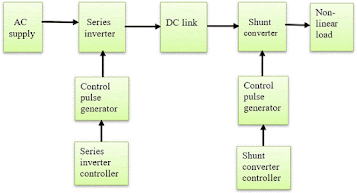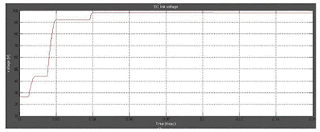ABSTRACT:
Emergence
of solid-state switching devices, like thyristors, GTO’s, IGBT’s and etc, are
widely used for controlling electric power in power electronic equipment for
various purpose such as HVDC systems, computers etc. These devices draw
disturbance in voltages and currents of both source side and distribution ends
due to its non-linearity. This induce harmonics, reactive power, and excess
neutral current cause the system to have less efficiency and reduction in power
factor. In this paper transformer less single-phase unified power quality
conditioner has been implemented to reduce the voltage and current distortions.
The operation and control of single-phase transformer less three leg Unified
power quality conditioner is investigated with the implementation of a new
pulse width modulation method for solving the coupling problem introduced by
common leg switches.
KEYWORDS:
1. TL-UPQC
2. SVPWM
3. Harmonics
4. Total
harmonic distortion
5. DSTACOM
6. DVR
SOFTWARE: MATLAB/SIMULINK
Fig.
1. Block Diagram for Harmonic Reduction Using UPQC.
EXPECTED SIMULATION
RESULTS:
Fig. 2. DC- link Voltage Waveforms.
Fig. 3. Source Current Waveforms.
Fig. 4. % THD of Source Side Current.
Fig. 5. Switching pulses of Inverter.
Fig. 6. Waveform of Supply side, Load side Voltage and Distorted Voltage at Supply Side.
Fig.
7. % THD of Distorted Voltage Waveform.
CONCLUSION:
The
custom power devices such as DVR helps in compensation of voltage unbalances
and DTATCOM helps in the elimination of current harmonics that are entering the
circuit due to the presence of a non-linear load at the consumer side. By using
a unified power quality conditioner both the issues such as compensation of
voltage unbalances and elimination of current harmonics can be minimized. The
replacement of the series transformer with a series inductance helps to overcome
the issues of cost and weight of the system. The working principle and
implementation of practical two-level space vector modulation has been shown.
The special switching sequence incorporated in space vector modulation
technique technique used here minimizes the coupling issues that occur in the common
leg operation.
REFERENCES:
[1] A. Bendre, D. Divan, W. Kranz, W. Brumsickle, Equipment
failures caused by power quality disturbances, in: Proc. IEEE IAS Annual
Meeting, 2004, pp. 482– 489.
[2] I. Hunter, Power quality issues-a distribution company
perspective, Power Eng. J., 15 (2) (Apr. 2001) 75–80.
[3] B. Singh, K. Al-Haddad, A. Chandra, A review of active filters
for power quality improvement, IEEE Trans. Ind. Electron., 46 (5) (Oct. 1999)
960–971.
[4] P. Curtis, The
fundamentals of power quality and their associated problems, IEEE Press, Wiley,
2007.
[5] M. El-Habrouk, M.K. Darwish, P. Mehta, Active power filters: a
review, IEE Proc., Electr. Power Appl. 147 (5) (2000) 403, https://doi.org/10.1049/ipepa: 20000522.






